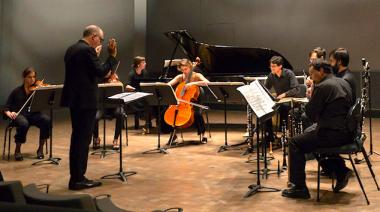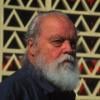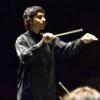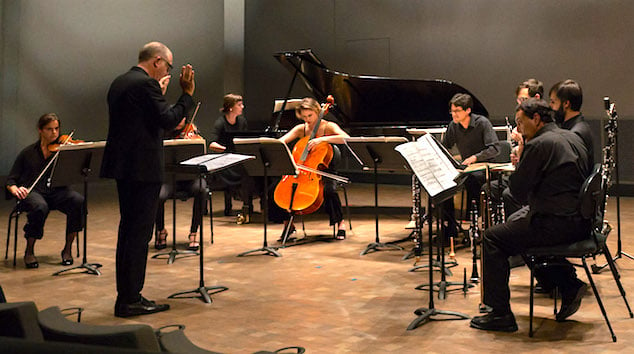
As a child, I used to spend hours gazing at a Hiroshige woodblock print hanging in the living room of our Michigan home. It’s titled Yabu Lane Below Atago and depicts a snow-covered street in 19th-century Edo (present-day Tokyo). A group of pedestrians, whose paper kasa umbrellas give them the appearance of mushrooms, leave footprints in the white powder with their wooden geta. Above them, three swallows flit between the falling flakes, passing beneath bamboo branches that sag gracefully under the weight of accumulated snow. The print perfectly captures the emotions I associate with new-fallen snow: that strange mixture of serenity, emptiness, and quiet oblivion.
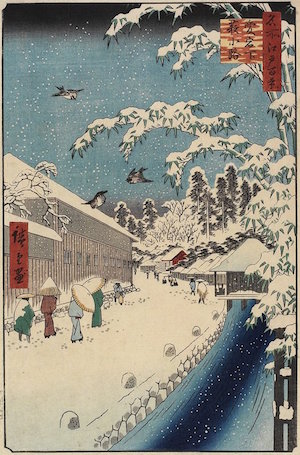
In the hypnotic first pair of canons, which reminded me of my Hiroshige print, pianist Kate Campbell entered with an inquisitive little melody in the keyboard’s upper octaves. This tinkling theme was backed by a steady accompaniment provided by violinist Hrabba Atladottir and cellist Helen Newby, who played a steadily repeating high A with delicate, sul ponticello bowing marked “icy” in the score. The resulting timbre, thin and grainy, elicited all the tactile sensations of snow — the sand-like consistency of fresh powder. At one point, it almost sounded like the ringing of distant jingle bells, as if some horse-drawn sleigh were approaching.
But this is not to say that Abrahamsen’s work is some schmaltzy Christmas wonderland. It’s something far subtler — an empty white expanse speckled here and there with pointillistic dots. In a few simple brush strokes, the composer opens up a kind of meditative space for the listener to occupy, perhaps reflecting on winters past.
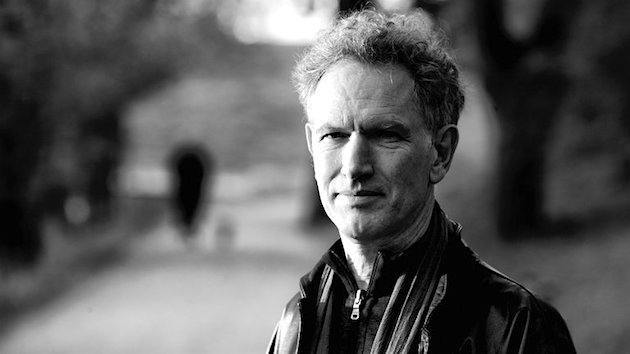
As the piece progresses, however, Abrahamsen experiments with more active textures. The second pair of canons felt slightly out of place, with sonorities reminiscent of typewriters or ticking clocks. Allegra Chapman plunked out a syncopated rhythm on prepared piano while the woodwind players layered on Steve Reich-style ostinatos. Occasionally, Tod Brody would emit a blustery air tone on alto flute, kicking up a cloud of snow in the form of sparkling piano glissandi. This colorful gesture — along with some actual jingle bells — returned in the scherzo-like fourth pair of canons. In conductor Steven Schick’s hands, the unruly counterpoint took on the jubilant, carnivalesque atmosphere of a bustling Weihnachtsmarkt.
Balancing this joyful image of winter were evocations of the crushing ennui that inevitably sets in come late January. In the third pair of canons, especially, I could feel my seasonal affective disorder flaring up for the first time since I left Michigan. Strings and woodwinds drooped feebly before moaning out a monotonous, three-note motive. Later, pianists Campbell and Chapman plodded through a series of jazzy blocked chords, muddied by dissonance. All the while, percussionist Christopher Froh rubbed pieces of paper on various surfaces, producing a sound that reminded me of cars passing through the brownish slush that lines city streets once the snow melts.
But the movement was particularly tragic given events earlier in the performance, when a gentleman in the front row suffered a heart attack or other medical emergency and had to be rushed to the hospital. The ensemble and venue staff handled the situation with aplomb, though the incident likely colored the audience’s interpretation of the piece once Schick picked things up again following the unfortunate interruption.
SFCMP’s engrossing performance of Schnee points to a larger revival of pictorial, nature-based composition. Abrahamsen and his colleagues on the new music scene (including Israeli composer Chaya Czernowin, who recently completed a similar set of icy ensemble works titled Winter Songs) have begun to revisit programmatic music without reverting to tired musical clichés — though Abrahamsen does ironically quote Vivaldi’s “Winter” from The Four Seasons.
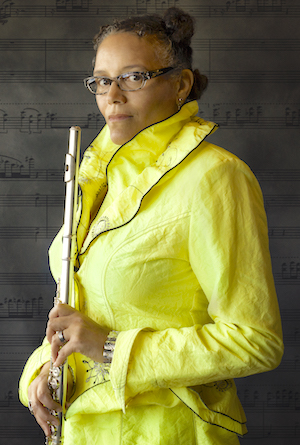
Other composers have come to rely too much on modern-day multimedia to impart an extra-musical program. This is certainly true of California-based Nicole Mitchell, whose Procession Time was given its world premiere on the first half of the program. The work, scored for flute, clarinet, piano, and cello, was held back by an amateurish video that Mitchell made herself. Behind the players flashed a poorly edited montage of protestors, adobe huts, ocean waves, and various children and adults of different ethnicities. Occasionally, the video would pan Ken Burns-style across pixelated, low-resolution images of canvases by abstract painter Norman Lewis, whose art served as inspiration for the piece.
It wasn’t at all clear what message Mitchell was trying to convey. In the end, the montage distracted from what was, in terms of music, a well-constructed chamber piece. The composer’s style, while conservative, has playful elegance, mixing the refined neoclassicism of Martinů and Stravinsky with folksy, often grotesque touches from Shostakovich and Bartók. She should let her music speak for itself.
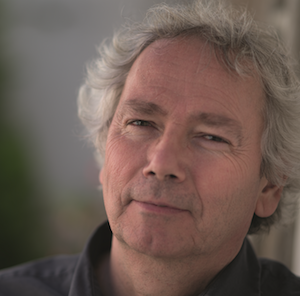
French composer Philippe Leroux’s 2016 Postlude à l'épais (“Postlude to the Thickness”) for flute, clarinet, piano, violin, and cello is a nine-minute piece bursting with all the kaleidoscopic whimsy of Joan Miró’s Carnaval de Arlequín. Much of the work is a mesmerizing exploration of instrumental color — every so often my head would shoot up from my notebook to see what combination of players could possibly be making the noises I heard. Violinist Aladottir and cellist Stephen Harrison posed question-like melodic lines that slid upward at the end, only to be answered irritably by bass clarinetist Peter Josheff, who produced some fantastic growling and squawking sounds.
As in Abrahamsen’s piece, there were some glimpses of the natural world in the form of avian motives — the sound of fluttering wings in Campbell’s piano part, for instance, or Brody’s Messiaen-variety birdsong on the piccolo. SFCMP’s splendid interpretation, displaying technical virtuosity and brimming with energy and humor, was a pleasant reminder of why audiences continue to patronize new music.

